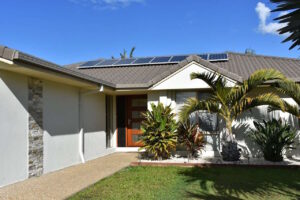It’s no secret that wind and solar farms have recently faced obstacles such as delayed grid connections, curtailed output and reduced revenue from energy delivered.
Construction of energy storage and transmission has barely begun, despite being essential to “firm up” the high-renewable grid which is the cheapest option to replace ageing coal-fired power stations.
Not-for-profit organisation Renew recently prepared a discussion paper investigating this issue, finding that its root cause is the electricity market’s design, which dates from the 1990’s.
The 2020 Integrated System Plan
In December 2019 the market operator (AEMO) published its Draft 2020 Integrated System Plan (click here) (ISP).
This document confirms other researchers’ earlier analysis which found that the cheapest option to replace the old coal-fired power stations is wind and solar, supported by energy storage and transmission.
AEMO modelled five scenarios varying by many factors including economics and technology uptake.
The most interesting is named “Step change”, is designed to be compatible with Australian decarbonisation by 2050, and delivers a 90% renewable grid by 2040.
Other scenarios such as “Central” are based on a slower transition in which coal-fired power stations are retained until end-of-life.
Significantly, this modelling confirms that a 90% renewable grid is achievable.
On the other hand, AEMO hasn’t yet described in detail how this system supplies energy through a very unfavourable week, for example when it’s cloudy and calm.
How deeply are energy stores depleted?
Renew has requested that AEMO provides this detail because without it, it’s inevitable that some commentators and policy makers won’t believe that a 90% renewable grid can be reliable.
Renew urges AEMO to examine the feasibility of more rapid and deeper decarbonisation in the next ISP, if not sooner.
For example, it should look into using hydrogen for seasonal storage, as discussed in our paper “Hydrogen – Help or Hype?”.
The ISP doesn’t talk much about the overall costs of its scenarios, but it does outline how much money would be spent on electricity generation and transmission to meet demand, – considering capital expenditure, maintenance, fuel, and so on – in each year out to 2041/42.
Spending in distribution networks and investments by consumers in solar and other home energy technology are excluded. As usual in the ISP, costs arising from greenhouse gas emissions or direct health impacts are also excluded.
The following chart collates AEMO’s Net Present Value of future grid costs for two scenarios.
Due to methodology, the magnitude of costs is not particularly meaningful and doesn’t represent the cost to consumers, but the percentage difference is indicative.
Significantly, Step Change only costs about six per cent more than the Central scenario.
From a whole-of-society point of view, this is a small price to pay for a reliable 90% renewable electricity grid and will likely be more than offset by the broader benefits of national fuel security, increased employment, avoidance of health impacts from fossil fuel pollution, reduced greenhouse gas emissions, and so on.
Energy storage in the market
The NEM’s current wholesale market suits wind farms and solar farms because they earn the half-hourly spot price whenever they generate and incur no penalty for being unavailable when the weather is unsuitable.
On the other hand, the current market does not suit large-scale energy storage.
Large batteries installed in the past couple of years have earned a good financial return from acting like shock-absorbers to stabilise the grid – their ability to instantly charge or discharge is very useful here. But there’s only a small market for such services, and it’s already nearly saturated.
To “firm-up” wind and solar, a high-renewable grid must store a significant fraction of a state’s power for hours or days, and this requires facilities hundreds of times larger than any battery installed to date.
AEMO found that a 90% renewable grid would need energy storage with a total power of 20,000 megawatts, and energy storage capacity over 500,000 megawatt-hours.
The real value of large-scale energy storage is to enable the construction of high levels of cheap wind and solar by firming-up its generation.
However, this value is not rewarded by the present market.
Developers and investors have no responsibility for the grid’s overall reliability, so they naturally “cherry-pick” to build the profitable part of the new system (wind and solar) and ignore the unprofitable, risky part (energy storage).
In a fully-renewable grid, it will be very difficult to operate the wholesale market as it’s currently designed.
Without fuel costs to naturally set generator bids, wholesale prices will tend to swing wildly between extreme highs and lows depending on weather conditions.
Energy storage can potentially dampen such price movements, but its uncoordinated operation by disparate private owners raises the risk of outcomes not in consumer interests, such as unnecessary blackouts or high prices.
Pumped Hydro and Snowy Hydro 2.0
Energy storage is essential to support a predominantly renewable energy system, and pumped hydro is the front-runner. In AEMO’s Step Change scenario with a 90% renewable grid, pumped hydro accounts for nearly 90% of energy storage in GWh, and nearly 50% of capacity in MW.
Proposed projects in Australia do not dam rivers and their water is recycled. Many of them utilise existing reservoirs.
Snowy Hydro 2.0 (SH2) is a unique project that will provide a huge amount of energy storage using existing reservoirs in the Snowy Hydro system.
It provides most of the energy storage in GWh for AEMO’s 90% renewable Step Change scenario. SH2 is “deep” storage, so its 2,000 MW peak power output is relatively small for the energy stored, but still equals a large coal-fired power station. It can deliver this power for a whole week.
An important question for SH2 has been “Is that much deep storage even useful?”.
AEMO’s draft ISP provides an answer in the following chart, simulating its energy storage levels over the year 2039-40 up to the “full” level of 350 GWh. SH2 is fully cycled during the year and is partially-cycled several times.
This demonstrates that SH2’s large energy store is useful; According to AEMO, SH2 is necessary for the grid to follow the Step Change scenario.
Some people have been concerned that much of SH2’s pumping energy will come from coal rather than wind and solar, propping up the economics of fossil fuel businesses. In the short term this is partly true, but this is a transitional arrangement necessary for system reliability.
Until enough wind and solar generators are built, our grid will rely partly on fossil fuels, especially to supply late-evening peaks.
As the transition progresses, remaining fossil generators will face an increasingly tough task to rapidly increase power as the sun sets or the wind dies down.
The more modern coal-fired power stations can turn down their power levels to say 30% or 50%, but it’s simply not feasible to completely shut them down during solar hours and then restart each evening – not only is this an arduous, complicated task, it also places additional stress on the aged equipment, increasing the chance of breakdowns.
During these transition years, frequently during the day we’ll have both a surplus of solar generation and unwanted but unavoidable coal-fired power.
It’s logical to store this surplus energy for discharge in the evening and night. More important is the longer-term, in which SH2 will be a critical asset for a fully renewable grid.
SH2 has been criticised for the project’s expense (approx. $4 billion).
A simple way to assess this cost is to compare it to home solar batteries such as the Tesla Powerwall 2 (PW2). Delivering SH2’s energy storage capacity in GWh would require every Aussie household (including apartments) to install 2.6 PW2 batteries at a cost of about $39,000 per household.
In contrast, SH2 costs about $400 per household.
For further debate on SH2’s merits, please refer to the essay by Bruce Mountain.
Transmission
The present market system is failing to construct the new transmission lines required for a least-cost future grid. AEMO estimates that across the eastern states, the existing transmission network can support additional wind and solar rated to only 13,000 MW – much less than the 30,000 MW that may be required to 2040.
Recently, governments have begun intervening directly to get these assets built. AEMO may also gain the power to direct development of new electricity transmission lines which it has found necessary via this planning process.
This is an important step to accelerate these new connections.
This transmission shortfall shouldn’t have occurred because the current amount of renewable generation was anticipated in 2009 when the Renewable Energy Target was set at 45,000 MWh by 2020. If a coordinated planning process existed, generator locations could have been anticipated and serviced proactively.
Market governance
In practical terms, the NEM has no single head who is accountable for the grid’s performance. In February 2019, the author of Renew’s paper asked the head of the Energy Security Board: “Who should the public hold to account if the transition goes poorly leading to blackouts?”
The reply was that “the entire industry would be accountable.” But it’s difficult to see how the public can hold an entire industry to account as various executives and politicians point fingers at each other.
Seeking a solution
Current efforts to improve the electricity system focus on greater intervention in the competitive market, via a number of measures small and large.
Based on experience to date, Renew is highly concerned that such incremental reform may take too long to achieve the rapid transition of the sector that is required under climate imperatives.
In the worst case, closure or failure of coal-fired generators could lead to blackouts if firm replacements aren’t built quickly enough, and consumers will bear the unnecessary costs of a disorderly transition.
Stronger measures may be required in the form of a more coordinated, planned approach.
For example, AEMO could be empowered to design and direct development of the grid as was done previously by state-based electricity commissions. It could raise tenders for private companies to construct and operate assets such as generation, energy storage and transmission.
This option is not excluded by the Energy Security Board’s post-2025 Market Design process.
If such a path is taken, once the physical transition is complete and closures of coal-fired power plant have ceased, a more competitive market could be reinstated, working to new principles more suited to the new system.
As with any changes in the electricity market, stakeholder consultation will be crucial to uphold the long-term interests of consumers.
With governments already intervening to directly invest in the system, such a coordinated planning option would allow for these projects to work together coherently.
Renew will be keeping a close ‘watching brief’ on developments in the coming months and will be further considering the options to achieve a faster transition of our electricity system, to ensure it develops coherently in the long-term interest of consumers.
For deeper analysis and references, please refer to our discussion paper.









